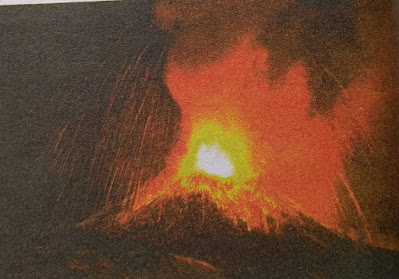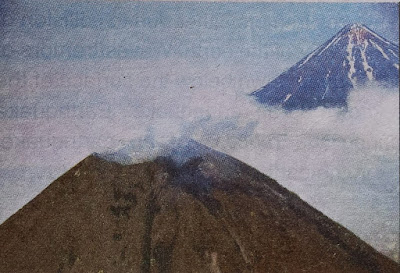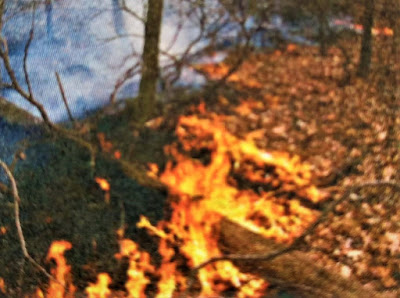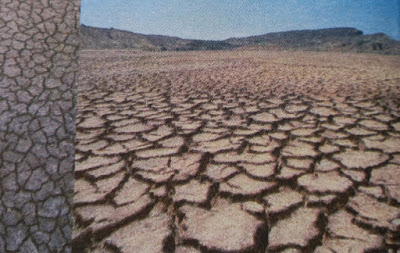Natural disasters are of two types. Disasters like earthquake, tsunami and volcano occur due to the changes in the interiors of the Earth, whereas disasters like floods, cyclone, forest fires, drought, etc. occur due to the changes on the surface of the Earth.
Earthquake
What is mean by Earthquake and its causes?
The weak upper later of Earth suddenly experiences tremors either due to collision of plates or due to the tremendous pressure in the interior of the earth. Waves/tremors of earthquake originate from its hypo-center which is deep down below the surface of the earth. Such sudden shaking or trembling is known as an 'earthquake'. Earthquake waves are created from the epicenter during the process of an earthquake. Earthquake occurs due to internal disturbance in the earth.
The waves of earthquake spread outward from the epicenter. The point on the surface of the earth exactly above the hypo-center/focus is knows as the epicenter. The intensity of the earthquake is felt the maximum around the epicenter. The intensity of the earthquake decreases as we move away from the epicenter. The effects of an earthquake depend on the intensity of the earthquake. We can measure the intensity of the earthquake and know its point of origin/hypo-center with the help of a Seismograph.
There are three main reasons for the occurrence of an earthquake:
- earthquake caused by volcanic eruption
- earthquake caused by Strike-slip faults
- earthquake caused by Subduction in an active subduction zone.
The center of the earth is approximately 6371 kms for form earth's surface.
Volcano
What is mean by volcano and its causes?
Volcano refers to an opening in the Earth's crust from which motion lava, rock fragments, ashes, dust and gases are ejected form below the Earth surface.
Volcanic eruption occurs due to four main reasons:
- High temperature in the interior of earth
- Creation of magma
- Creation of gases and vapour
- Rising of magma towards earth's surface.
The magma is pushed upwards by the gases lying under the magma. Secondly, the water percolating through the cracks and openings of weak rock surface turns into vapour. This vapour also causes magma to rise upwards. The gases present in the magma reach near the surface of the earth and erupt with a high pressure in the form of lava, ash, gases, rock pieces of various shapes and sizes etc. and this is known as a volcano. All these volcanic residuals come on the surface of earth and form a mountain like structure. If the amount of gases and vapour is more and the vent on the earth's surface is narrow, then the eruption is dangerous. But if the amount of gases is less and the vent is broad and long, then the molten lava comes out slow and spreads itself on the earth's surface.
There are three types of volcanoes:
- Active volcano
- Dormant volcano
- Extinct volcano
Volcanoes are found at various places in the world. There is only one active volcano in India and that is in the islands of Andaman and Nicobar. Volcanic eruption at any place or region leads to massive destruction in the local area.
Volcanoes have certain benefits too. The fertility of land increases due to lava. The agricultural production is very good due to fertile land in Java and Sumatra, as it is made of lava. The potassium rich soil from the volcanic residuals helps the farmers to obtain abundant crop production. The hot water springs in the areas of volcano have germ-killing property and that cures skin diseases. At a lower depth from surface of earth, certain minerals like mercury, tungsten, tin-plating, zinc aluminium, etc. Can be obtained easily due to volcano.
The lava that cools down inside the vent of extinct volcano turns it into diamonds with the passage of time. The small rocks thrown out during volcanic eruption known as 'Lapilli' which have been proved to be very useful as they can be moulded easily.
Tsunami
What is called a tsunami and its causes?
Due to volcanic eruption or earthquake on the sea floor, high oceanic waves are created. They are known as tsunami. They are high and have unimaginable length.
Their length is approximately 700 to 1600 kms. These waves travel with a great speed and force. By the time they reach the coast, they attain great height and power which causes a great deal of destruction in the coastal regions. It was witnessed on 11th March, 2011 in Japan
Strong and whirling winds also create big and strong waves. Once the storm gets over, these waves become tall with a high wavelength which can travel great distances. Such waves cause a great deal of destruction in the coastal regions. Hence they are known as the destructive waves. At times, rock falls, ice-falls or underwater landslides or slums can generate displacement of water to create a tsunami.
Flood
What is mean by flood and its causes?
The flow of excess of water in a river is called flood. Flood occurs due to two reasons
- Heavy rain in the upper course of a river
- If a dam on rivers breaks, flood occurs in the low lying areas on the river bank.
Landslide
What is mean by landslide and its causes?
The sliding of large mass of rock material, soil, etc. down the side of a mountain or cliff, is termed as Landslide. Two factors cause landslide excessive rainfall or an earthquake. For example, in the rainy season, the railway transportation in konkan gets obstructed due to landslides.
Forest Fire
What is mean by forest fire and its causes?
Friction between dry branches of trees and other factors cause forest fire. It causes a great amount of damage to the forest resources.
Famine
What is mean by Famine and its causes?
Scanty rainfall leads to the drying up of the ground water and shortage of food and water. This condition is known as famine. The condition of famine occurs in case of scanty rainfall or no rainfall for 2 to 3 years successively. The possibility of famine is less if we plant more trees.









Comments
Post a Comment